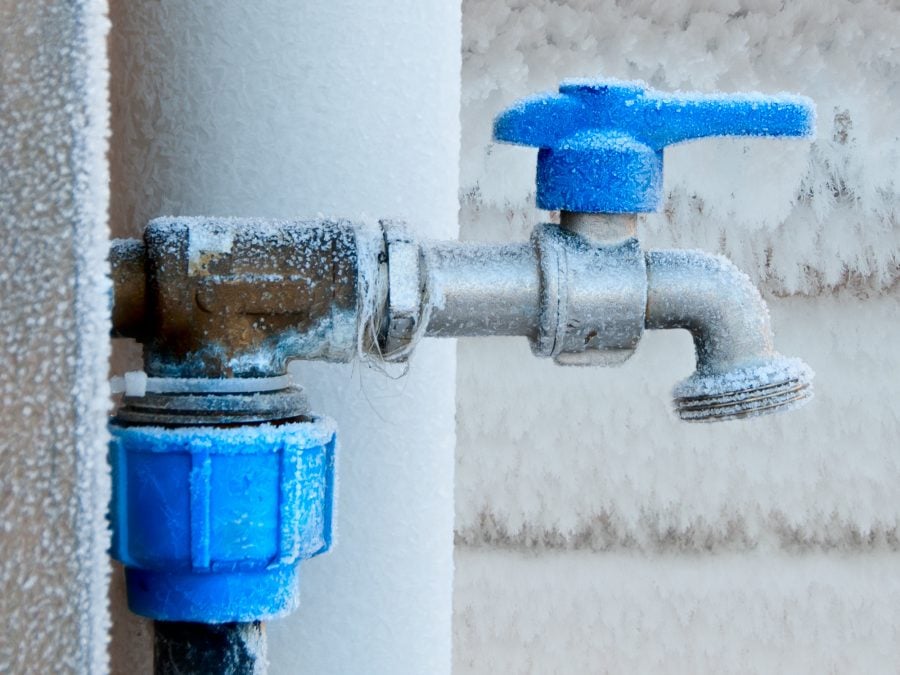Just how do you actually feel with regards to Helpful Tips to Prevent Frozen Pipes this Winter?
:strip_icc()/snow-outdoor-faucet-pipes-4af65d1e5e904fb1aa7bf74071fe5d89.jpg)
Cold weather can damage your plumbing, especially by freezing pipes. Here's how to avoid it from taking place and what to do if it does.
Introduction
As temperature levels decrease, the risk of icy pipelines increases, possibly causing expensive repairs and water damage. Understanding just how to prevent icy pipes is crucial for home owners in chilly environments.
Comprehending Frozen Pipelines
What causes pipes to ice up?
Pipes freeze when revealed to temperatures below 32 ° F (0 ° C) for prolonged durations. As water inside the pipelines freezes, it expands, taxing the pipe walls and potentially creating them to break.
Risks and problems
Frozen pipes can result in water system disturbances, home damage, and costly repair services. Ruptured pipelines can flood homes and trigger substantial architectural damage.
Signs of Frozen Pipeline
Identifying icy pipes early can stop them from rupturing.
Just how to identify icy pipes
Look for reduced water circulation from taps, unusual smells or noises from pipelines, and noticeable frost on exposed pipelines.
Prevention Tips
Shielding prone pipelines
Cover pipes in insulation sleeves or utilize heat tape to shield them from freezing temperatures. Concentrate on pipes in unheated or outside locations of the home.
Home heating techniques
Keep indoor rooms adequately heated, specifically areas with pipes. Open cupboard doors to allow warm air to distribute around pipelines under sinks.
Securing Outside Plumbing
Garden pipes and outdoor faucets
Detach and drain pipes yard pipes before winter. Install frost-proof faucets or cover exterior faucets with shielded caps.
What to Do If Your Pipelines Freeze
Immediate actions to take
If you presume frozen pipelines, maintain faucets open to soothe pressure as the ice thaws. Use a hairdryer or towels taken in hot water to thaw pipes slowly.
Long-Term Solutions
Architectural adjustments
Think about rerouting pipes away from outside wall surfaces or unheated areas. Add added insulation to attics, cellars, and crawl spaces.
Upgrading insulation
Buy top notch insulation for pipelines, attics, and walls. Correct insulation aids keep consistent temperature levels and minimizes the threat of icy pipelines.
Final thought
Avoiding icy pipes needs proactive steps and fast responses. By comprehending the reasons, indicators, and preventive measures, house owners can protect their plumbing during winter.
5 Ways to Prevent Frozen Pipes
Drain Outdoor Faucets and Disconnect Hoses
First, close the shut-off valve that controls the flow of water in the pipe to your outdoor faucet. Then, head outside to disconnect and drain your hose and open the outdoor faucet to allow the water to completely drain out of the line. Turn off the faucet when done. Finally, head back to the shut-off valve and drain the remaining water inside the pipe into a bucket or container. Additionally, if you have a home irrigation system, you should consider hiring an expert to clear the system of water each year.
Insulate Pipes
One of the best and most cost-effective methods for preventing frozen water pipes is to wrap your pipes with insulation. This is especially important for areas in your home that aren’t exposed to heat, such as an attic. We suggest using foam sleeves, which can typically be found at your local hardware store.
Keep Heat Running at 65
Your pipes are located inside your walls, and the temperature there is much colder than the rest of the house. To prevent your pipes from freezing, The Insurance Information Institute suggests that you keep your home heated to at least 65 degrees, even when traveling. You may want to invest in smart devices that can keep an eye on the temperature in your home while you’re away.
Leave Water Dripping
Moving water — even a small trickle — can prevent ice from forming inside your pipes. When freezing temps are imminent, start a drip of water from all faucets that serve exposed pipes. Leaving a few faucets running will also help relieve pressure inside the pipes and help prevent a rupture if the water inside freezes.
Open Cupboard Doors
Warm your kitchen and bathroom pipes by opening cupboards and vanities. You should also leave your interior doors ajar to help warm air circulate evenly throughout your home.

Hopefully you liked our excerpt about How to Prevent Your Pipes From Freezing. Many thanks for taking a few minutes to read our piece. Do you know about someone else who is involved in the topic? Do not hesitate to share it. Thank you for your time spent reading it.
Click Here